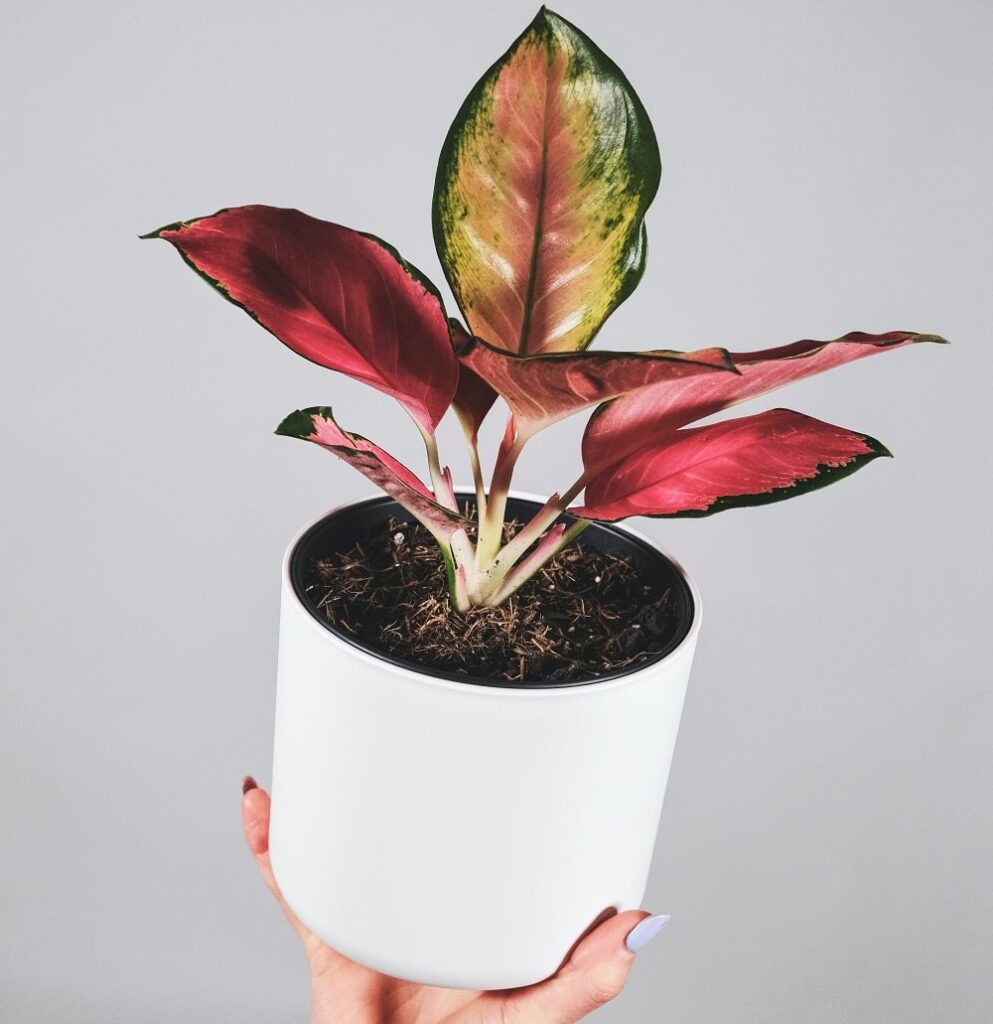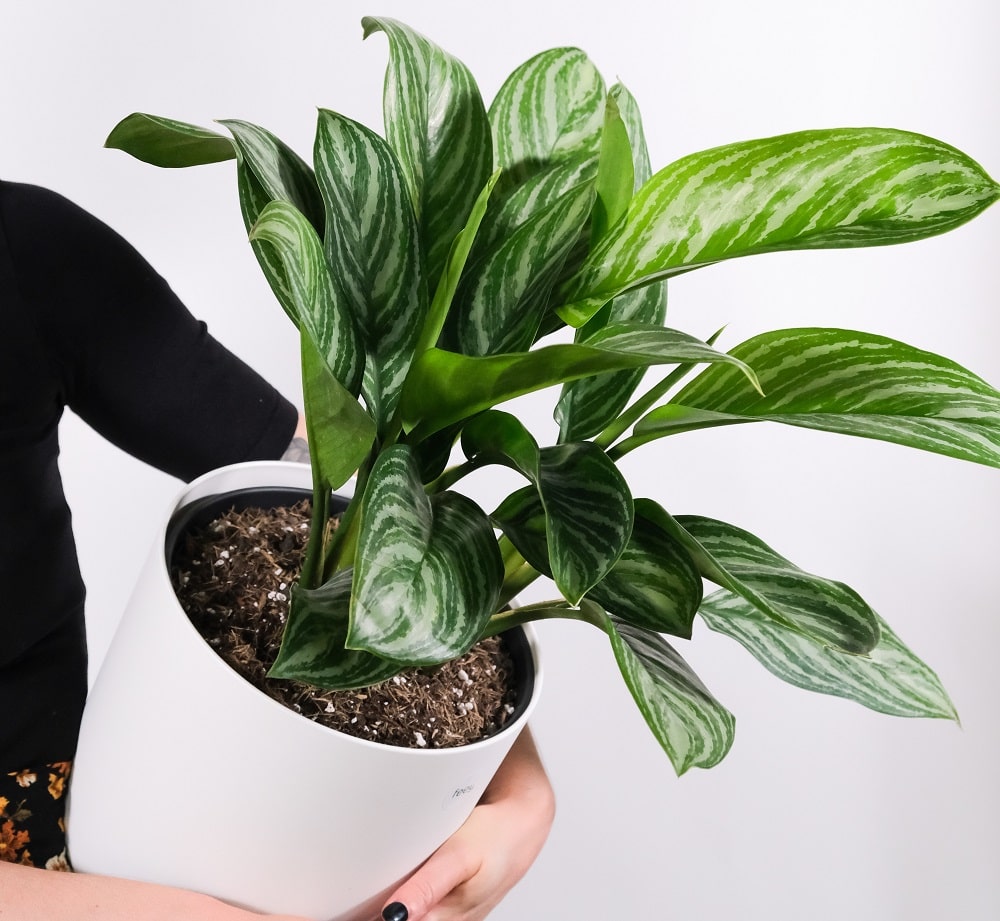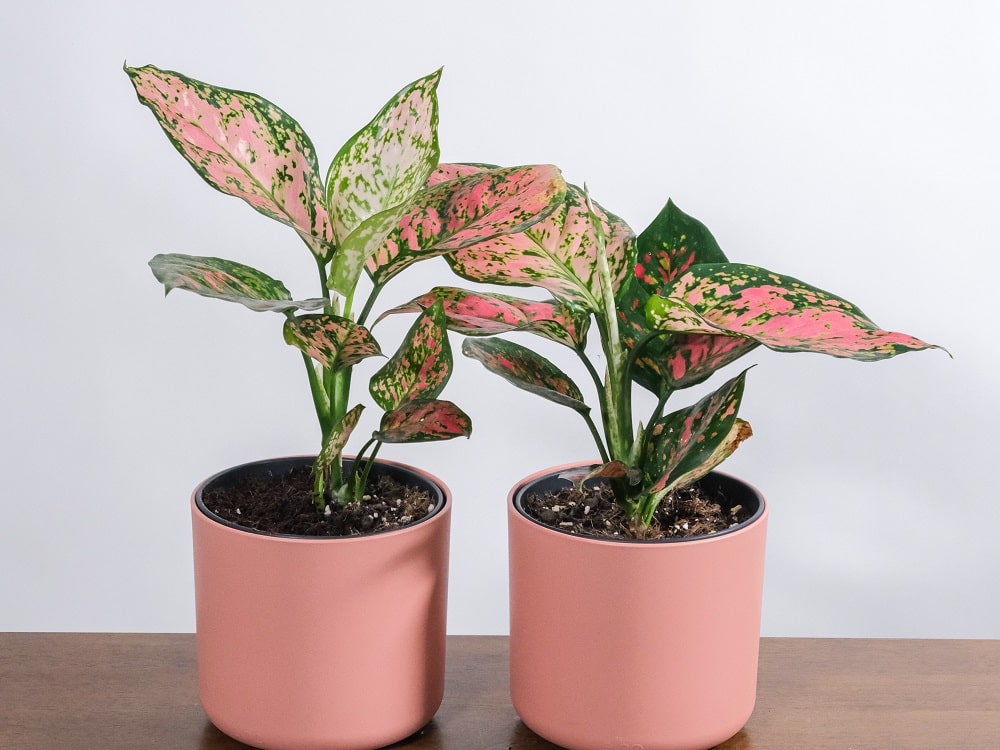Chinese evergreen (aglaonema) is the easiest and best-looking houseplant to consider for your home or office. The plant is native to the subtropics of Southeastern Asia.
The aglaonema plant does not struggle when grown in the right condition. But this does not mean that the Chinese evergreen is invincible.
A Chinese evergreen leaves curling is a common phenomenon. Identifying the cause of aglaonema leaves curling up will help to fix it.
So, why are my Chinese evergreen leaves curling? The possible cause of aglaonema leaves curling inwards are low humidity, temperature stress, excess direct sunlight, improper watering, pest infestation, over-fertilization, and poor water quality.
Subjecting a Chinese evergreen with curl leaves to high humidity, bright indirect sunlight, and warm temperature will help to uncurl them.
This article provides a detailed insight into the causes of aglaonema leaves curling down, up, and inward. I have also compiled some solutions for correcting the curling leaves.
You May Also Like: How to Grow and Care for Chinese Evergreen

Causes of Chinese Evergreen Leaves Curling & Solutions
Overwatering Stress
Aglaonema thrives in soil with plenty of moisture. But many gardeners end up providing excess water to the houseplant in the long run.
Overwatering Chinese evergreens will result in leaves curling. Excess moisture in the potting mix usually damages the plant root system.
A damp environment causes root rot. The issue makes the plant unable to absorb water and mineral ions to support its healthy growth.
Curling and yellowing of leaves is the initial sign of overwatering. Correcting the root rot problem at an early stage will save the houseplant.
The rule of thumb is to investigate the soil moisture content before watering the houseplant. Insert your index finger in the soil up to 2-inches to feel the moisture level.
Water the houseplant if the topsoil is dry. Do not water the plant when the soil is still moist or wet. Remember to use a pot with drainage holes to get rid of excess water.
You May Also Enjoy: 20 Stunning Aglaonema Varieties (With Pictures)
Underwatering Issue
Chinese evergreens are native to tropical rainforests in Asia. The habitat receives moderate rainfall to spearhead healthy growth.
Besides that, aglaonema is a hardy plant and can tolerate a low water supply. But failure to water the houseplant completely will result in leaves curling and drooping.
Chinese evergreen plant is not a perfect option for busy gardeners. The indoor plant needs watering about twice a week during spring and summer.
Insufficient water supply will make the plant experience slow growth. The aglaonema stems will also become brittle and crispy.
Aglaonema leaves curling due to underwatering can easily be corrected. The best option is to water the plant until the potting mix is moist.
Schedule the watering time for your houseplant to prevent leaves from curling and wilting. Water the plant twice a week during spring and summer. Consider watering aglaonema once a month during winter.
Another option is to re-pot the plant since leaves curling could be due to insufficient room. Less room inhibits the gardener from watering the houseplant according to the requirements.
Excess Direct Sunlight Exposure
Chinese evergreen survives under the canopy in their native habitat. The shelter provides shade to prevent scorching the delicate aglaonema leaves.
Too much direct sunlight exposure will make Chinese evergreen leaves curl and even burn. The leaves later develop brown spots when the issue is not corrected on time.
Dim light will make the aglaonema leaves turn yellow and stems become leggy. Place the plant near the window to receive bright indirect light for 2-3 hours.
Another excellent option is to install electrical bulbs to provide filtered light to your houseplant. Filtered light will enable the plant to undertake photosynthesis and grow faster.
You can also install sheer curtains around the windows to help in filtering the sunlight rays’ strength to the plant. The sheer curtains also help to add a little bit of privacy.
You Can Also Read: Why Are My Chinese Evergreen Leaves Turning Brown?
Temperature Stress
Extreme cold, air drafts, and hot temperatures cause aglaonema leaves to curl. Besides that, temperature stress usually causes stunted growth, low germination, and reduced photosynthesis rate.
Aglaonema plants thrive well in tropical climates. Indoor environment experience temperature dynamics and this end up affecting the well-being of the plant.
The optimum temperature requirement for Chinese evergreens is about 70-80oF. Any temperature below or above the optimum requirement would cause leaves to curl and droop.
I recommend keeping the houseplant away from the hot and cold air drafts. Hot air drafts are caused by radiators or heaters while cold drafts by window breeze during winter.
Another excellent option to consider is buying a digital thermometer to help in gauging the best room temperature for your houseplant.
You May Also Read: Why are the leaves of My Aglaonema Limp and Drooping?
Low Humidity Levels
The native habitat of Chinese evergreens experiences high humidity levels. But the indoor environment experiences frequent humidity changes.
The dynamics in humidity level end up affecting the well-being of the aglaonema plant. Leaves drooping and curling are the initial signs of low humidity levels.
Botanists suggest that low humidity makes the leaves of Chinese evergreens lose moisture. Aglaonema leaves curling up are a sign that the plant wants to reduce the rate of water loss.
Increasing the humidity level in the room will help to prevent the curling of leaves. It will also promote proper plant growth.
Purchase an electrical humidifier to create a humid climate for your houseplant. You may also place the houseplant in the bathroom where the humidity level is high.

Over-fertilization
Chinese evergreens are slow feeders. The plant usually flourishes without fertilizer in its native habitat. But the application of fertilizer provides nutrients that the indoor environment cannot offer.
Aglaonema plants that lack phosphorus, nitrogen, and potassium experiences yellowing of leaves. But the excessive application of fertilizer will result in salt buildup around the root system.
Too much salt turns out to be toxic to the root system. Aglaonema leaves turning brown are due to damaged roots by excess salt buildup.
The best option is to avoid fertilizing your houseplant during the dormant period (winter). Consider fertilizing the plant during the growing season (spring and summer).
Besides that, use slow-release fertilizer and perform the task twice a year. The application schedule will help to prevent over-fertilization.
Nutritional Deficiency
Fertilizer, sunlight, and water are crucial nutrients for plants. Aglaonema plants can utilize both natural and artificial light to undertake photosynthesis.
If the houseplant is unable to utilize nutrients obtained during photosynthesis, it will experience nutritional deficiency. Aglaonema leaves will begin curling and turning yellow.
Indoor plants will need organic fertilizer to help reverse the issue. The fertilizer provides phosphorus, nitrogen, and potassium that improve soil fertility.
Keep in mind that Chinese evergreens thrive in slightly acidic soil. Correction of soil pH and fertility will help to prevent aglaonema leaves from curling and yellowing.
Poor Water Quality
Water quality determines plant health and growth. Tap water contains chemical substances that are harmful to the houseplant.
These chemicals also ruin the soil’s pH and fertility. Splashing the tap water on the leaves causes them to curl due to the chemical ingredients.
I recommend using either rainwater or distilled water than tap water. Distilled water lacks chemical ingredients that harm your houseplant.
Pest Infestation
Chinese evergreens are highly susceptible to mealy bugs, spider mites, and aphids. Insect infestation on the plant leaves causes curling and brown spots.
Spider mites are common during dry conditions and suck cell-sap from the leaves. The leaves become weak and curl up. Prolong exposure to insect infestation will cause wilting.
The best option is to use a neem oil spray to treat the leaves. You can also use a cotton swab dipped in alcohol to eliminate the insects.
Ensure the plant receives bright indirect sunlight for 2-3 hours daily. It is an alternative treatment for getting rid of small insect infestations.
Diseases
Chinese evergreen is a hardy houseplant to consider. But it is not invincible to plant diseases caused by bacteria or fungi.
Bacterial and fungal diseases affect plant well-being. The foliage is the most affected when the aglaonema plant is attacked by diseases.
If you notice your houseplant leaves turning yellow, brown, and even curling, it could be due to bacterial leaf blight. Plant wilting for no reason could be due to root rot disease.
I recommend determining the cause and adopting the right action to resolve it. Fungicides and copper components help to treat bacterial leaf blight.
Repotting the plant to a fresh pot mix saves the houseplant from root rot. Remember to snip off the affected part of the roots before re-potting.
Acclimation
I bought my aglaonema from an online plant store. The houseplant begun curling leaves few days after being delivered to my home.
This is normal, and there is no need to freak out. The growing condition in the plant store is different from that of your indoor condition.
The Chinese evergreen leaves curling is a sign the plant has not adapted to your indoor condition. Provide proper care to restore the leaves’ shape.
You May Also Like: Why Are My Aglaonema Leaves Turning Yellow?
Frequently Asked Questions
Why Are My Chinese evergreen Leaves Turning Yellow?
Low lighting and insufficient nutrients are the main causes of aglaonema leaves turning yellow. Other causes are old age, acclimation, low humidity, and improper watering.
Why Are My Chinese evergreen Leaves Drooping?
Underwatering and high temperatures cause aglaonema foliage to droop. Other possible causes are low humidity, direct sunlight exposure, acclimation, pests, and diseases.
Why Are My Chinese Money Plant Leaves Curling?
It is due to low light, temperature stress, and watering problems. Keep in mind that new leaves will curl and flatten later after exposure to bright indirect sunlight. Provide temperature range 55-65oF and consider watering schedule to fix the leaf curling issue.
How Often Do You Water a Chinese evergreen?
Watering a Chinese evergreen plant depends on the environmental climate. I recommend watering the houseplant twice a month during spring and summer. Water the plant once a month during winter. A proper watering schedule will help to avoid underwatering and overwatering.
Should I Mist My Chinese evergreen?
Yes. Misting Chinese evergreens help to increase the humidity level. The indoor humidity level is dynamic and this might affect the plant health. Chinese evergreens thrive in an environment with high humidity levels.

In Conclusion
Chinese evergreens are beginner-friendly houseplants. The indoor plant requires minimal attention when compared to other popular ornamental plants.
Chinese evergreen leaves curling, yellowing, and browning happen to be the common problems affecting the houseplant.
Leaf curling should not be a cause of concern. The rule of thumb is to identify the stress and try to implement the tips mentioned in the article to fix it.
Otherwise, maintain good growing conditions to enhance proper plant growth and health. You will enjoy many years of a beautiful Chinese evergreen plant.
More Sources and References
- Editor. Curling Leaves on Plant. The Urban Landscape.
- Scot Nelson. Bacterial Leaf Blight on Aglaonema. Cooperative Extension Service.
- L.S Osborne. Aglaonema Production Guide. The University of Florida.
